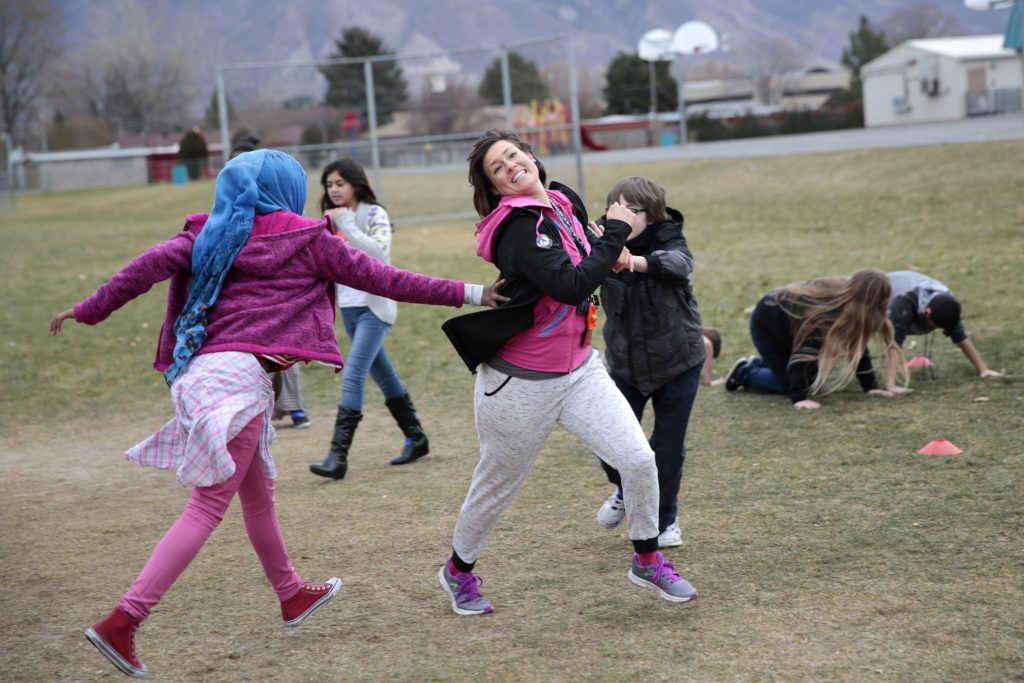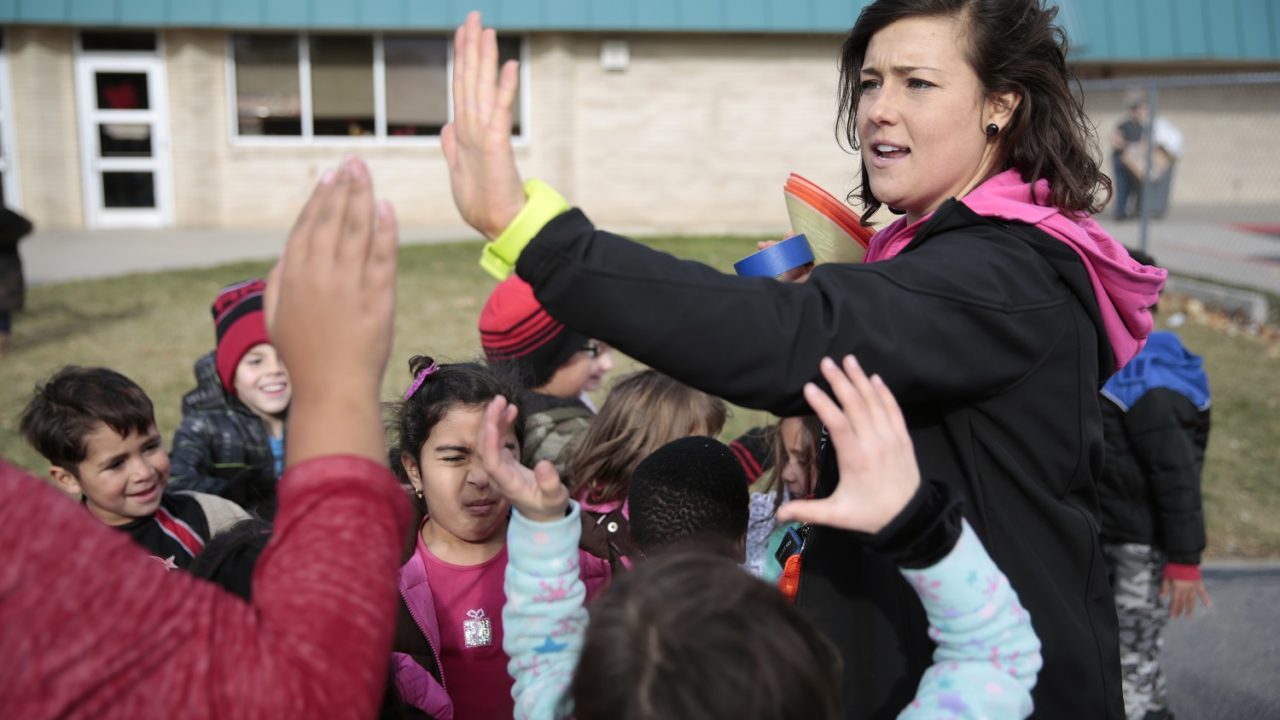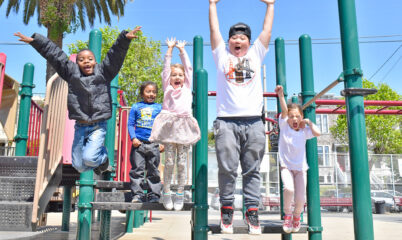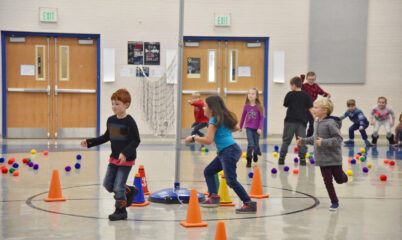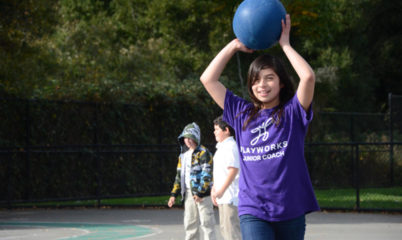At a recent Playworks training, the recess team clusters around four different pieces of butcher paper, drawing maps for TK kindergarten, primary, and upper-grade recesses and for the after-school program recreation time. This is the second day of a two-day recess deep dive, and the group is taking a fresh look at how to organize their play space.
Each group maps out where different activities happen or could happen, on their playground. They also identify challenge areas, like the puddles where T-K’s made “paint” with sidewalk chalk or the almost out-of-site hill at the back of the upper-grade field. The hill is a particular problem. Students love to roll down it but this too often means injuries and muddy clothes back in the classroom. Between the hill and the fence, there is also an area completely out of eye-sight to recess supervisors.
“Oh, the hill is absolutely off-limits during our program,” said the after-school program leader. It just is not possible for her handful of staff to adequately supervise the area with more than 100 children outside at one time. The school-day supervisors are surprised to hear this, but eventually, decide that it will be a relief to put the area outside the “play zone” on their maps as well. “The most important thing is consistency for the students,” explains one teacher.
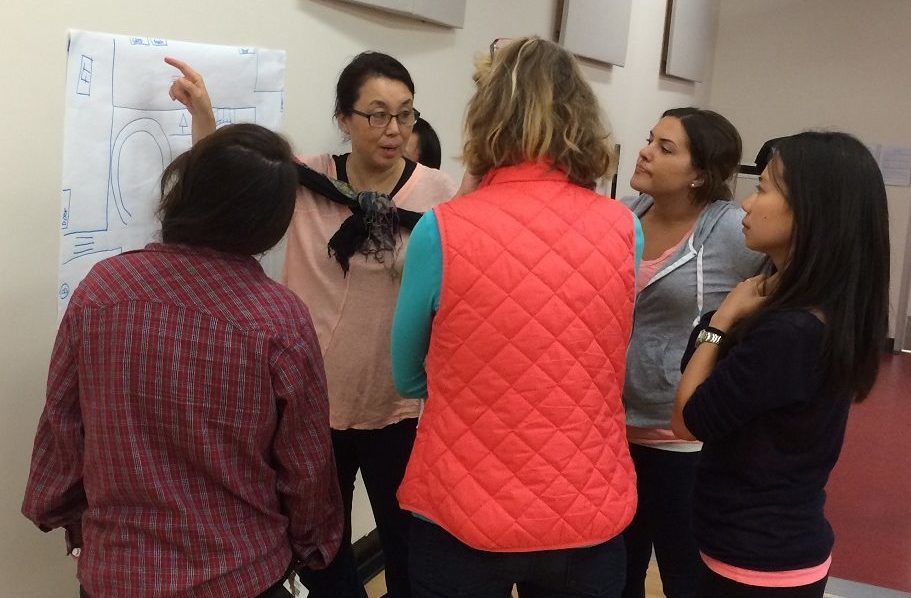
Reimagining the Recess Team
Previously, each grade’s recess team worked independently, and the after-school staff and other roles were not part of the conversation. Now, this is changing. The new recess team includes teachers, rec aids, the rec coordinator, and parent volunteers—anyone who supervises recess. It also includes the intervention specialist, the front office administrator, the community liaison, and the principal, all roles well-positioned to reinforce school-wide norms.
Many schools are pulling together an intentionally diverse working group to focus on recess systems. Schools across the US and as far away as Ireland are making recess teams a priority and seeing results. Playworks partner schools with recess teams in place report around twenty hours saved in transitions each day. By addressing the culture at recess, over 90% of teachers at Playworks schools notice that kids return to class more ready to learn.
This team got off the ground with a two-day deep dive into recess systems with a Playworks trainer. The first day was spent playing core games like foursquare, basketball, and tag (as well as learning new favorites) to equip recess aides to teach games and set consistent expectations. The second day, the team is focused on building systems for a successful recess, from mapping the playground to addressing equipment, consistent expectations, and strategies to make sure all kids feel included and empowered during recess time.
Revisiting Recess Systems
Small tactical changes make a big difference when everyone is on the same page. At this school, the recess team decides that instead of assigning equipment by class, each grades’ recess will have enough equipment for each game; they agreed that this would cut down on missing and misused items. They also identify equipment they would discontinue across all recesses, like scooters (“All those squished fingers!”), as well as equipment to pull out of storage that they didn’t know they had, like a stand-alone basketball hoop for the T-K playground.
Later that day, the group tackles rules and consequences. Instead of giving time-outs, they decide to use a “reflection line” when students need redirection. The intervention specialist nodded approvingly; this technique at recess better reflects the strategies he uses in the classroom. Instead of waiting until their time-out is over, students are invited to walk the line and come back when ready to explain how their behavior wasn’t safe, respectful, or kind. Adults can then check for understanding and redirect as needed.
The team also discusses how to scaffold student learning across grades so that all students learn how to play core games like foursquare or basketball. TK and primary grade rec aides discuss basketball modifications that could help the littlest students learn foundational skills before moving on to big-kid recess. The Playworks Games Library gives recommendations by grade.
Recess Rollout
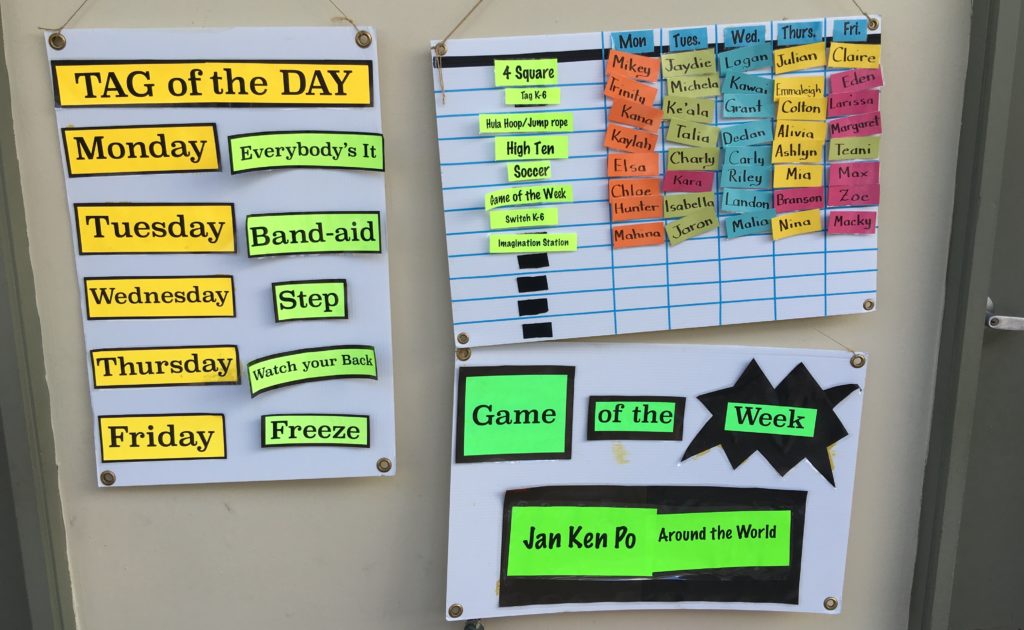
One aide volunteers to keep a master calendar of when new games will be introduced. The team decides that core games like foursquare, basketball, and a free-play “imagination zone” will always be available. Other games, like new variations of tag, will be introduced weekly or monthly to make sure all kids have options they enjoy.
In addition to ironing out systems, the group mentally prepared to roll out changes to the rest of the school. They chose a team name to cement their identity and discuss logistics for an all-school assembly and classroom communications. The principal reminded the group that new changes often take 4-6 weeks to stick.
Just like PBIS or other whole-school interventions, recess benefits from a cross-functional, comprehensive approach. By agreeing on new systems with the right people in the room, the team is poised to be much more successful than they would have been in isolation.
Want to get your recess team started?
Get a free recess assessment to learn about support options for your school.
